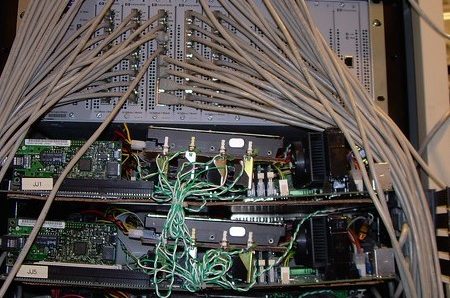
As uncertainty stalks markets and remote work proliferates, the ability to find liquidity and measuring trade performance is critical. Fixed income desks around the world, who apply the analytics of ‘Best Ex’ and Transaction Cost Analysis can refine their trade process to gain insight on costs, asset allocation, and assess counterparty execution performance. It’s a dynamic that underscores a recent shift: where the use of best trade execution tools once focused on fiduciary duty to clients, now, they offer a way to help gain an edge.
The Genesis
Best Execution requires financial institutions to provide the most favorable order execution for investors in given market conditions. The concept of Best Ex has existed since at least the 1930s, and with regulators’ increasing focus on investor protection, institutions are required to demonstrate compliance.
MifID II is an iteration of Best Ex regulation, and while it is European, the global footprint of many institutions impacted by the regulation means Best Ex has had global impact since its rollout in 2018. Yet many firms still have no systematic way to show they meet requirements. So how can compliance be demonstrated?
At ICE Data Services, Best Ex can help measure trade execution quality relative to comparable fixed income transactions in the market. With the recent coverage expansion in 2022, ICE’s BestEx service now covers 97% of the ICE Index universe.
When a bond is bought or sold, the transaction price can be compared to our Continuous Evaluated Pricing (CEP™) as a benchmark or other relevant reference price. The data fueling CEP is gathered from several sources: relationships with buy and sell side firms, arrangements with dealers and electronic trading platforms, and through public reporting systems operated by the Municipal Securities Rulemaking Board and Financial Industry Regulatory Authority.
To generate CEP, a rules-based pricing application is applied, overseen by a team of evaluators. This systematically captures and incorporates market information, to produce a pricing process responsive to market conditions. This continuous, independent evaluated pricing for fixed-income securities is a contrast to operators which provide limited coverage or only end-of-day pricing.
ICE’s BestEx service is a quantitatively driven approach, building statistical distributions around our CEP or other reference price. At the most general level, a distribution is based on the asset class, tenor, trade side, and trade size. A percentile score is given to each trade based on where the price differential falls within the distribution. This effectively allows for relative comparison between different trade sizes and asset types, eliminating the need to normalize trade to price differences based on different fixed income asset types. Additionally, BestEx will score a trade multiple times before and after the trade time to account for the context of the trading environment at and around the time of execution.
The ability to measure relative trading quality against a price benchmark is only one element of best execution. Over the past few years, best execution in the industry has evolved to include bond and trade-specific factors, such as trade intent, size, speed, likelihood of execution and more. As a result, large institutions which were early adopters have recognized the opportunity to better analyze their trades. Enter: Transaction Cost Analysis.
The Evolution
Asset managers have traditionally lacked a robust set of tools to measure their trade costs comparatively – a contrast to the sell side, which have transparency on pricing and enjoy an information advantage. Although common and heavily used in equities, fixed income can now benefit from growing advancements in Best Ex and Transaction Cost Analysis (TCA). What was once a regulatory requirement has become an important set of metrics for traders, fund managers, and those who decide on asset allocation.
TCA provides a measurement of transaction costs, taking the liquidity of different instruments into account. For example, a trader may achieve Best Execution for both a high yield bond and a Treasury – but their differing liquidity profiles mean they may have very different transaction costs.
Importantly, TCA allows asset managers to monitor the elements of a trade in greater detail – for example: the cost to implement individual fixed income trading strategies by asset class and liquidity, how long a particular counterparty took to execute a transaction, whether they execute trades for a certain type of bond faster than others, and metrics which can be adjusted for regions and currencies.
As a result, ‘BestEx’ committee meetings have become more frequent and influential within asset management firms, along with investment in ‘Execution Analysts’. With the data to identify, monitor and adjust different trade factors, asset managers can more precisely tweak their strategy. In short, the transparency offered by these tools enables asset managers to make more informed decisions.
Investor pressure on costs has also been a motivator for adoption. As best execution analysis becomes more widespread across fixed income, asset managers can proactively demonstrate to clients that they are reviewing trades to ensure value-add – or “Execution Alpha” for portfolios. Investors are actively seeking transparency around execution costs and asking more specific questions. In response, asset managers have taken steps to ensure they can respond to these new inquiries.
For the sell side, these tools represent the opportunity to win more business. By applying independent analysis to measure relative execution quality, they enable brokers to demonstrate their efficiency to asset managers and potentially gain more trade volume. TCA also allows dealers to gauge their performance relative to peers in a specific bond asset class, and further narrow this down by industry sector.
As the sophistication of Best Ex and TCA evolves, those who utilize these tools will be better positioned to analyze performance and hone their Best Ex strategy. And in a world of growing cost pressures, the ability to transparently demonstrate efficiencies to a range of stakeholders, may be more crucial than ever.


